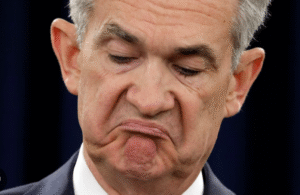$WMT $AMZN $TGT
#BlackFriday #Shoppers #USRetail #Inflation #USEconomy #ConsumerSpending #RetailSales #HolidayShopping #Walmart #Target #Amazon #RetailEconomy
US retailers are adjusting their strategies for Black Friday, spreading discounts and promotional events over an extended period to capture consumer interest. This shift comes amidst a more challenging economic landscape, where consumer spending—a major pillar of the US economy—appears to be losing momentum. As inflationary pressures from previous months persist, households are treading cautiously, cutting back on discretionary purchases, and prioritizing essentials. Retail giants, including Walmart, Amazon, and Target, hope that the staggered approach will spur more sustained shopping activity rather than focusing all efforts on a single day.
Retail sales, often regarded as an economic bellwether, provide crucial insight into the strength of consumer confidence and overall financial sentiment. However, recent data points indicate that retail spending is no longer growing as robustly as it did in the immediate post-pandemic period. The lingering effects of elevated inflation levels have left many American households stretched thinner than before, limiting their ability to splurge during the holiday season. For companies like Walmart and Target, whose business models rely heavily on high-volume festive spending, this dip in consumer enthusiasm may impact their top-line performance. Amazon’s push to expand its Black Friday promotions early is also indicative of shifting retail dynamics aimed at potential demand softening.
The challenges faced by the US consumer have significant implications for broader macroeconomic trends. The US economy is heavily dependent on consumer expenditures, which account for roughly 70% of its GDP. Therefore, slower consumer spending growth could translate into lower overall economic growth in the months ahead. Inflation, though on a gradual decline compared to its recent highs, continues to dent disposable income. Many shoppers are grappling with high costs in essential categories, including housing, food, and healthcare. Retailers are increasingly aware of this shift in behavior and have tailored their pricing and promotions strategies to adapt to these financial constraints.
Companies engaged in retail, including Walmart, Amazon, and Target, will likely experience mixed outcomes this holiday season. Analysts are carefully monitoring quarterly earnings and revenue forecasts for these firms, as the holiday season is typically an important litmus test for their overall financial health. Furthermore, the reshaping of traditional buying habits—like spreading promotions across several weeks—could lead to new patterns in consumer behavior that extend beyond the holiday season. Retail investors and market participants must keep a close watch on consumer sentiment surveys and updated spending reports, which will play a key role in shaping the equity and retail market movements in the near term.











Comments are closed.